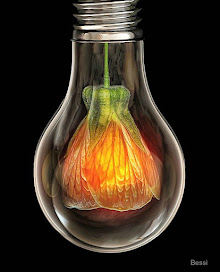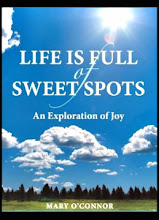 At the end of August, fragrant blooms of honeysuckle begin to fade in verdant winding tendrils. Though other richly perfumed flowers emerge in the landscape, a distinct emptiness arises when it’s no longer possible to taste a drop of honeysuckle nectar. The slowly extracted stamen of this flower rewards an eager mouth with a sweet pearl of nectar and embodies the edible perfume of summer. Its absence is equivalent to the memory of a last kiss; a sad occasion for mere mortals, but not for bees and those who partake in the ambrosial delights of varietal honey.
At the end of August, fragrant blooms of honeysuckle begin to fade in verdant winding tendrils. Though other richly perfumed flowers emerge in the landscape, a distinct emptiness arises when it’s no longer possible to taste a drop of honeysuckle nectar. The slowly extracted stamen of this flower rewards an eager mouth with a sweet pearl of nectar and embodies the edible perfume of summer. Its absence is equivalent to the memory of a last kiss; a sad occasion for mere mortals, but not for bees and those who partake in the ambrosial delights of varietal honey.The opportunity to experience the flavor of single floral nectar never disappears, not as long as artisanal beekeepers manage hives that actively pursue the nectar of a particular flower. Honey that is harvested in this manner is referred to as varietal or monofloral honey. There are over 300 types of monofloral honeys available in the United States according to the National Honey Board. Colors range from light to dark amber, with more intense flavors found in deeply hued honeys. Textures also vary and may express creamy or grainy personalities, delightful qualities in raw honey that that aren’t tainted by pasteurization.
Pasteurized Orange Blossom & Clover honeys are commonly found in pantries across America. Pasteurization of honey is, for the most part, cosmetic. Yeasts that could potentially cause fermentation in honeys with high water content are destroyed, but naturally occurring traces of botulinum spores (bacteria found in all honey that is harmless to adults, but unsafe for infants) aren't completely eliminated. Pasteurization of honey also prevents glucose molecules from crystallizing; a natural occurrence that is considered unattractive in non-creamed honeys sold in grocery stores. In addition to affecting the subtle flavors of honey, pasteurization breaks down beneficial enzymes that aid in digestion and may also reduce antioxidants (which are present in greater quantity in darker honeys versus lighter ones).
Common processed honeys display general flavor traits that are citric and slightly musky, with faint butterscotch notes. Raw artisanal honeys cannot be generalized when it comes to flavor as subtleties abound. Lighter honeys like acacia are extremely delicate and display understated floral and vanilla notes, whereas darker honeys like Buckwheat contain molasses, dark caramel, and malt notes. Chestnut honey’s flavor resembles Buckwheat honey with added notes of wet hay, nuts, orange blossom and bitter wood. Its aroma is deep and somewhat barn-like. Despite mild indolic qualities, Chestnut honey achieves incredible harmonies when combined with Greek-style yogurt, Chinese cassia cinnamon and walnuts.
Like wine, monofloral honey is best paired with cheese or fruit, so its flavor can be thoughtfully savored. Slowly relishing a bit of honey on a spoon is decidedly sensual as aspects of taste, texture and mouth feel vary from honey to honey. The following varietals will tempt taste buds with endless pleasure:
The Ohi'a Lehua tree, sacred to Pele (goddess of fire), is the first plant to grow out of new lava flows and is a sign of forest regeneration. The honey made from its bright pink blossoms is thick, sweet and juicy. Big Island Bees Ohi'a Lehua Honey opens up with hints of pineapple, Anjou pear skin and a touch of toasted marshmallow; gustative qualities that are well-suited to its crystalline texture. There is a soft musky quality to this honey, a characteristic one finds in freshly cut green figs or the clean scent of skin and hair; a delectable and erotic effect that is best experienced rather than explained.
Big Island Bees Organic Wilelaiki Honey is golden yellow in color, its granular texture reminiscent of Farina on the tongue. Wilelaiki, also known as Christmas Berry, possesses a flavor that is both unique and unforgettable. Rich notes of saffron, leather, and blonde wood warm the palate with occasional hints of dry lime mingled with eucalyptus. The finish is faintly bittersweet, with an overall impression that resembles badam halwa in taste and texture. Wilelaiki honey has the personality of a rich attar and is most perfume-like in the way its aromas unfurl.
When sampling Big Island Bees Organic Macadamia Nut Blossom Honey, one expects to find nutty flavors due to its source. Nature trumps reason (as well as the product description on the label) when it comes to the taste of this honey. Bees transform nectar into an amber-colored floriental treat that is pure bliss. Seduction at its best beckons instinct with playfulness and stealth. After toying with your expectation of taste, Macadamia Nut Blossom honey delivers the unexpected; it is citric, asserts deep notes of sultry Jasmine and Orange Blossom, and finishes with trilling notes of butterscotch, rum, amber and vanilla. Flirtatious and sensual, it is a Holy Grail honey if there ever was one.
Bee Raw Colorado Star Thistle Honey
Texture supports taste and emphasizes the sense of touch in degustation. Bee Raw Colorado Star Thistle Honey is thick, but not crystalline, lingering in the mouth like a soft caramel. The sweet and hay-like qualities of beeswax are more apparent in the mouth feel versus the flavors that that are perceived on the tongue. This is a gentle honey with delicate notes of Ceylon Cinnamon, banana and a creamy mineral facet. A sumptuous treat perfect for spreading on baked goods, cheese and fruit.
Bee Raw Colorado Star Thistle Honey

Texture supports taste and emphasizes the sense of touch in degustation. Bee Raw Colorado Star Thistle Honey is thick, but not crystalline, lingering in the mouth like a soft caramel. The sweet and hay-like qualities of beeswax are more apparent in the mouth feel versus the flavors that that are perceived on the tongue. This is a gentle honey with delicate notes of Ceylon Cinnamon, banana and a creamy mineral facet. A sumptuous treat perfect for spreading on baked goods, cheese and fruit.
Pascal Verrière Apiculteur Miel de Tilleul 
Tilleul in French refers to the blossoms of the Linden Tree (also known as Lime Blossom or Basswood). A higher ratio of naturally occurring glucose (not initiated by feeding bees sugar water in winter) results in partial to full crystallization of this fragrant honey, which tastes like its blossoms smell. The honey gradually reveals a white floral bouquet, asserting an ozonic green freshness; much like the sensation of walking under a blooming Linden tree. Pascal Verrière Apiculteur Miel de Tilleul is not easily available stateside, but can be found in a few brick and mortar gourmet shops. The honey comes from the Ariège region in the South of France, where bees forage in pristine mountains that are untouched by pesticides or chemical fertilizers. Armen Benlian of Yaranush carries this honey in her Westchester store.

Tilleul in French refers to the blossoms of the Linden Tree (also known as Lime Blossom or Basswood). A higher ratio of naturally occurring glucose (not initiated by feeding bees sugar water in winter) results in partial to full crystallization of this fragrant honey, which tastes like its blossoms smell. The honey gradually reveals a white floral bouquet, asserting an ozonic green freshness; much like the sensation of walking under a blooming Linden tree. Pascal Verrière Apiculteur Miel de Tilleul is not easily available stateside, but can be found in a few brick and mortar gourmet shops. The honey comes from the Ariège region in the South of France, where bees forage in pristine mountains that are untouched by pesticides or chemical fertilizers. Armen Benlian of Yaranush carries this honey in her Westchester store.
Notes:
To learn more about the history of honey and its role in mythology, read the honey section in the article entitled "The Lore of Simple Things: Milk, Honey and Bread in Myth and Religion." The article is one of many gems that can be found on Endicott Studio's The Journal of Mythic Arts.
To learn more about the history of honey and its role in mythology, read the honey section in the article entitled "The Lore of Simple Things: Milk, Honey and Bread in Myth and Religion." The article is one of many gems that can be found on Endicott Studio's The Journal of Mythic Arts.
The photo of a bee above a honeysuckle flower comes from Jeff Mohamed's blog, Jeffincyprus. He writes about birds and wildlife in Houston, Texas.
Product photos are sourced from the honey manufacturers.








